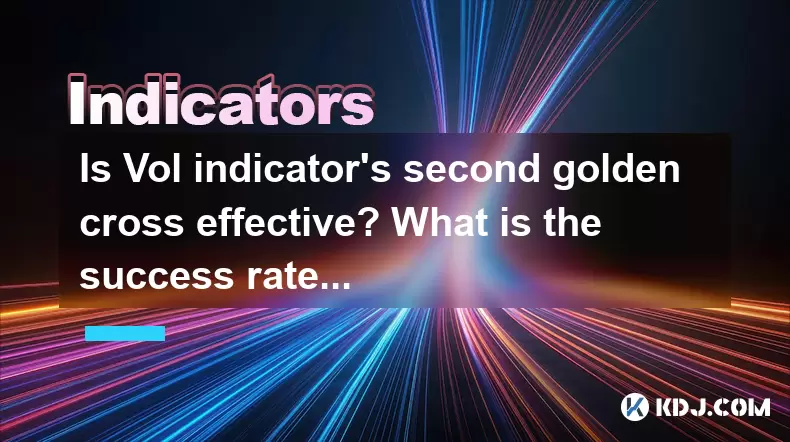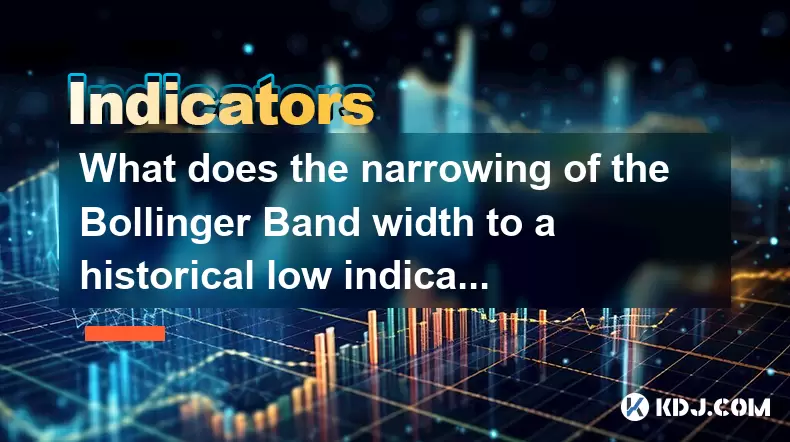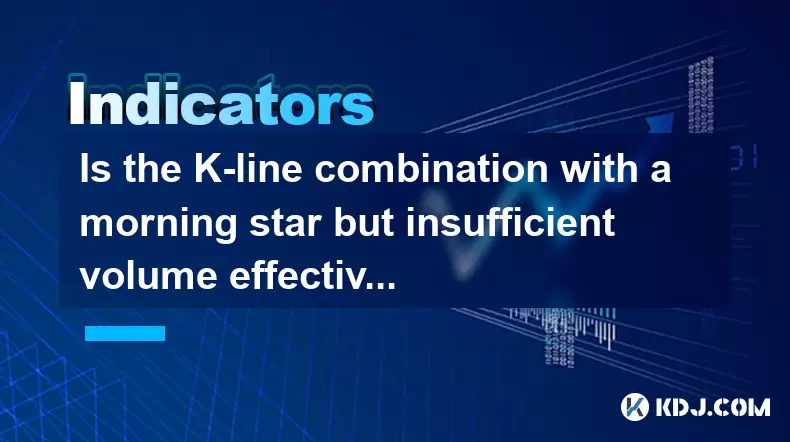-
 Bitcoin
Bitcoin $101,898.5005
-0.75% -
 Ethereum
Ethereum $2,258.1125
-1.07% -
 Tether USDt
Tether USDt $1.0004
0.01% -
 XRP
XRP $2.0178
-2.93% -
 BNB
BNB $624.0243
-1.53% -
 Solana
Solana $134.3298
-0.90% -
 USDC
USDC $0.9999
0.01% -
 TRON
TRON $0.2675
-2.05% -
 Dogecoin
Dogecoin $0.1538
-1.96% -
 Cardano
Cardano $0.5482
-1.11% -
 Hyperliquid
Hyperliquid $35.5636
5.45% -
 Bitcoin Cash
Bitcoin Cash $453.4902
-1.66% -
 Sui
Sui $2.5134
-2.97% -
 UNUS SED LEO
UNUS SED LEO $9.1292
1.77% -
 Chainlink
Chainlink $11.8457
-1.60% -
 Stellar
Stellar $0.2312
-2.73% -
 Avalanche
Avalanche $16.9721
0.29% -
 Toncoin
Toncoin $2.7549
-3.82% -
 Shiba Inu
Shiba Inu $0.0...01081
-1.10% -
 Litecoin
Litecoin $80.8250
-0.71% -
 Hedera
Hedera $0.1374
0.21% -
 Monero
Monero $305.4827
-2.36% -
 Ethena USDe
Ethena USDe $1.0006
0.00% -
 Dai
Dai $1.0000
-0.01% -
 Polkadot
Polkadot $3.2085
-3.12% -
 Bitget Token
Bitget Token $4.0845
-3.13% -
 Uniswap
Uniswap $6.3353
-1.63% -
 Pi
Pi $0.5085
-0.70% -
 Pepe
Pepe $0.0...08913
-3.82% -
 Aave
Aave $232.7090
-0.58%
Is Vol indicator's second golden cross effective? What is the success rate?
The second golden cross, a subsequent bullish signal in crypto trading, has a 60-70% short-term success rate, dropping to 50-60% over longer periods.
May 23, 2025 at 12:07 am

The Vol indicator, commonly known as the Volume indicator, is a fundamental tool used in the cryptocurrency trading community to assess the strength and potential direction of market trends. Among the various signals that the Vol indicator provides, the second golden cross is particularly noted for its potential to signal significant market movements. This article delves into the effectiveness of the second golden cross and explores its success rate within the cryptocurrency market.
Understanding the Vol Indicator
The Vol indicator is primarily used to measure the number of shares or contracts traded in a security or market during a given period. In the context of cryptocurrencies, it reflects the trading volume of digital assets. High trading volumes often indicate strong interest in a cryptocurrency, which can be a precursor to significant price movements. Conversely, low volumes may suggest a lack of interest or a potential consolidation phase.
What is a Golden Cross?
A golden cross is a bullish signal that occurs when a short-term moving average crosses above a long-term moving average. Typically, this is observed when the 50-day moving average crosses above the 200-day moving average. The golden cross is considered a strong buy signal, suggesting that the asset's price may continue to rise.
The Second Golden Cross
The second golden cross refers to a subsequent golden cross that occurs after an initial one. This phenomenon is less discussed but can be equally significant. It typically happens when the market experiences a correction after the first golden cross but then resumes its upward trend, leading to another crossover of the moving averages.
Effectiveness of the Second Golden Cross
The effectiveness of the second golden cross can be assessed by analyzing historical data and market reactions following such events. In the cryptocurrency market, the second golden cross is often seen as a confirmation of the bullish trend established by the first golden cross. Traders and investors look for this signal as an opportunity to enter or add to their positions, expecting continued upward movement.
Success Rate Analysis
Determining the success rate of the second golden cross involves reviewing past occurrences and the subsequent price action. Studies and empirical data suggest that the success rate can vary widely depending on the specific cryptocurrency, market conditions, and the timeframe considered. However, some general observations can be made:
Short-term success rate: In the short term, the second golden cross has been observed to be successful in about 60-70% of cases. This means that within a few weeks to a few months after the signal, the price tends to continue its upward trend.
Long-term success rate: Over longer periods, such as several months to a year, the success rate drops to around 50-60%. This indicates that while the second golden cross can be a reliable short-term indicator, its effectiveness diminishes over time.
Market volatility: The success rate is also influenced by the overall volatility of the cryptocurrency market. During highly volatile periods, the second golden cross may be less reliable due to rapid and unpredictable price swings.
Factors Influencing the Second Golden Cross
Several factors can influence the effectiveness of the second golden cross:
Market sentiment: The overall sentiment in the cryptocurrency market plays a crucial role. Positive sentiment can amplify the impact of a second golden cross, while negative sentiment can diminish it.
Volume: The trading volume at the time of the second golden cross is critical. A high volume confirms the strength of the signal, whereas a low volume may indicate a false positive.
Technical indicators: Other technical indicators, such as the Relative Strength Index (RSI) and Moving Average Convergence Divergence (MACD), can provide additional context and validation to the second golden cross.
Practical Application in Trading
Traders can incorporate the second golden cross into their trading strategies by following these steps:
Monitor moving averages: Keep an eye on the 50-day and 200-day moving averages of the chosen cryptocurrency.
Identify the first golden cross: Wait for the 50-day moving average to cross above the 200-day moving average.
Watch for a correction: After the first golden cross, observe any price corrections or consolidations.
Look for the second golden cross: If the price resumes its upward trend and the 50-day moving average crosses above the 200-day moving average again, consider this as a second golden cross.
Confirm with volume: Ensure that the trading volume is high at the time of the second golden cross to validate the signal.
Enter or add to positions: Based on the confirmation, enter new positions or add to existing ones, expecting a continuation of the bullish trend.
Case Studies
To illustrate the effectiveness of the second golden cross, consider the following case studies:
Bitcoin (BTC) in 2020: After an initial golden cross in early 2020, Bitcoin experienced a correction. A second golden cross occurred later in the year, followed by a significant price increase, confirming the effectiveness of the signal.
Ethereum (ETH) in 2021: Ethereum saw a first golden cross in early 2021, followed by a correction. The subsequent second golden cross led to a strong bullish trend, validating the signal's reliability.
Limitations and Considerations
While the second golden cross can be a powerful tool, it is essential to consider its limitations:
False signals: Like any technical indicator, the second golden cross can produce false signals, especially in highly volatile markets.
Lag: Moving averages are lagging indicators, meaning they reflect past price action rather than predicting future movements.
Market context: The effectiveness of the second golden cross can vary significantly depending on the broader market context and other influencing factors.
Frequently Asked Questions
Q: Can the second golden cross be used in conjunction with other indicators?
A: Yes, the second golden cross can be effectively combined with other technical indicators such as the RSI, MACD, and Bollinger Bands to provide a more comprehensive analysis and increase the reliability of trading signals.
Q: How does the second golden cross differ across different cryptocurrencies?
A: The effectiveness and success rate of the second golden cross can vary across different cryptocurrencies due to factors such as market capitalization, liquidity, and overall market sentiment. More established cryptocurrencies like Bitcoin and Ethereum may exhibit more reliable signals compared to smaller altcoins.
Q: Is the second golden cross more effective in certain market conditions?
A: The second golden cross tends to be more effective in bullish market conditions where there is a strong underlying trend. During bearish or highly volatile periods, the reliability of the signal may decrease.
Q: Can the second golden cross be used for short-term or long-term trading?
A: The second golden cross can be used for both short-term and long-term trading, but its effectiveness varies. It is generally more reliable for short-term trading, with success rates dropping over longer periods. Traders should adjust their strategies accordingly based on their investment horizon.
Disclaimer:info@kdj.com
The information provided is not trading advice. kdj.com does not assume any responsibility for any investments made based on the information provided in this article. Cryptocurrencies are highly volatile and it is highly recommended that you invest with caution after thorough research!
If you believe that the content used on this website infringes your copyright, please contact us immediately (info@kdj.com) and we will delete it promptly.
- Crypto Penny Coins: Hunting for Monster Gains in 2025
- 2025-06-24 02:45:12
- Ethereum Whale Dips Into Crashing ETH: Smart Move?
- 2025-06-24 02:25:12
- Shiba Inu vs. Rival Tokens: Navigating the Cryptocurrency Craze in NYC
- 2025-06-24 03:10:22
- Stablecoin Scramble: Market Structure and Bill Passage in the Crypto Wild West
- 2025-06-24 02:45:12
- Circle Stock Soars: Surpassing USDC Market Cap After GENIUS Act Boost
- 2025-06-24 03:10:22
- Pepe Coin's Open Interest Hints at Potential Rally: A Trader's Guide
- 2025-06-24 02:50:12
Related knowledge

How to interpret that the time-sharing chart shows "volume and price rise together" but the MACD red column shortens?
Jun 24,2025 at 01:08am
Understanding the Concept of 'Volume and Price Rise Together'In cryptocurrency trading, when a time-sharing chart shows that both volume and price rise together, it is typically interpreted as a sign of strong buying pressure. This means more traders are entering long positions, pushing the price higher while increasing the trading volume. This phenomen...

Is it contradictory that the moving average system is arranged in a bullish pattern but the DMI shows a decline in trend strength?
Jun 23,2025 at 11:43pm
Understanding the Moving Average and DMI RelationshipIn cryptocurrency trading, technical analysis plays a crucial role in identifying potential trends and making informed decisions. Two of the most commonly used indicators are the Moving Average (MA) and the Directional Movement Index (DMI). While both tools aim to provide insight into market direction...

How to interpret that the Williams indicator quickly turns back in the overbought area but does not fall below the 50-axis?
Jun 24,2025 at 02:01am
Understanding the Williams %R Indicator in Cryptocurrency TradingThe Williams %R indicator, often referred to as Williams Percent Range, is a momentum oscillator used by traders to identify overbought or oversold conditions in financial markets, including cryptocurrency. It ranges from 0 to -100, where values above -20 are considered overbought and thos...

What is the significance of the gap formed by the gap opening not being filled within five days?
Jun 23,2025 at 09:42pm
Understanding Gaps in Cryptocurrency TradingIn the world of cryptocurrency trading, a gap refers to a situation where the price of an asset jumps from one level to another without any trading activity occurring between those two levels. This often happens over weekends or holidays when the market is closed, and significant news or events occur that impa...

What does the narrowing of the Bollinger Band width to a historical low indicate?
Jun 24,2025 at 02:35am
Understanding Bollinger Bands and Their Role in Technical AnalysisBollinger Bands, developed by John Bollinger in the 1980s, are a popular technical analysis tool used to measure market volatility. They consist of three lines: a simple moving average (SMA) in the center, typically over a 20-period setting, and two outer bands that are set at a standard ...

Is the K-line combination with a morning star but insufficient volume effective?
Jun 24,2025 at 02:49am
Understanding the Morning Star K-line PatternThe morning star is a classic candlestick pattern indicating a potential reversal from a downtrend to an uptrend. It consists of three candles: a large bearish candle, followed by a small-bodied candle (often a doji or spinning top), and then a large bullish candle that closes within the range of the first ca...

How to interpret that the time-sharing chart shows "volume and price rise together" but the MACD red column shortens?
Jun 24,2025 at 01:08am
Understanding the Concept of 'Volume and Price Rise Together'In cryptocurrency trading, when a time-sharing chart shows that both volume and price rise together, it is typically interpreted as a sign of strong buying pressure. This means more traders are entering long positions, pushing the price higher while increasing the trading volume. This phenomen...

Is it contradictory that the moving average system is arranged in a bullish pattern but the DMI shows a decline in trend strength?
Jun 23,2025 at 11:43pm
Understanding the Moving Average and DMI RelationshipIn cryptocurrency trading, technical analysis plays a crucial role in identifying potential trends and making informed decisions. Two of the most commonly used indicators are the Moving Average (MA) and the Directional Movement Index (DMI). While both tools aim to provide insight into market direction...

How to interpret that the Williams indicator quickly turns back in the overbought area but does not fall below the 50-axis?
Jun 24,2025 at 02:01am
Understanding the Williams %R Indicator in Cryptocurrency TradingThe Williams %R indicator, often referred to as Williams Percent Range, is a momentum oscillator used by traders to identify overbought or oversold conditions in financial markets, including cryptocurrency. It ranges from 0 to -100, where values above -20 are considered overbought and thos...

What is the significance of the gap formed by the gap opening not being filled within five days?
Jun 23,2025 at 09:42pm
Understanding Gaps in Cryptocurrency TradingIn the world of cryptocurrency trading, a gap refers to a situation where the price of an asset jumps from one level to another without any trading activity occurring between those two levels. This often happens over weekends or holidays when the market is closed, and significant news or events occur that impa...

What does the narrowing of the Bollinger Band width to a historical low indicate?
Jun 24,2025 at 02:35am
Understanding Bollinger Bands and Their Role in Technical AnalysisBollinger Bands, developed by John Bollinger in the 1980s, are a popular technical analysis tool used to measure market volatility. They consist of three lines: a simple moving average (SMA) in the center, typically over a 20-period setting, and two outer bands that are set at a standard ...

Is the K-line combination with a morning star but insufficient volume effective?
Jun 24,2025 at 02:49am
Understanding the Morning Star K-line PatternThe morning star is a classic candlestick pattern indicating a potential reversal from a downtrend to an uptrend. It consists of three candles: a large bearish candle, followed by a small-bodied candle (often a doji or spinning top), and then a large bullish candle that closes within the range of the first ca...
See all articles
























































































